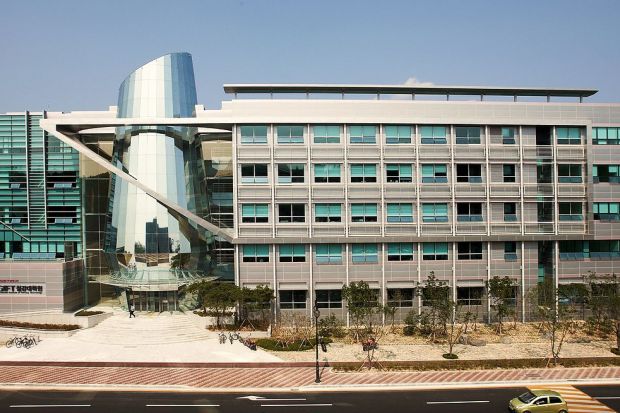POSTECH: Highest Efficiency of Spin Hall Effect of Light in the Optical Regime
A Korean research team has discovered an infrared light that spins stronger and farther. They have successfully demonstrated the highest efficiency of the spin Hall effect of light (SHEL) in the near-infrared regime. SHEL refers to a phenomenon in which light moves in a direction perpendicular to the plane of incidence when light is refracted. It has attracted attention as a key technology for ultrahigh precision measurement since it contains information on the planar interface.
A POSTECH research team led by Professor Junsuk Rho (Department of Chemical Engineering and Department of Mechanical Engineering), Dr. Minkyung Kim, and Ph.D. candidate Younghwan Yang in collaboration with Professor Dasol Lee (Department of Biomedical Engineering) at Yonsei University have demonstrated the first case of SHEL that is highly effective in the ultra-violet regime. The findings from the study were recently published in Nature Communications.
When light is transmitted or reflected at a planar interface, it is split into two incidences. As the SHEL increases, the intensity of transmitted or reflected light weakens, decreasing its efficiency.
There have been previous attempts to enhance the efficiency of SHEL, but it required complex three-dimensional structures and no process existed to fabricate them. The operating area was also limited to the microwave regime with relatively long wavelengths.
To overcome this, the research team experimentally demonstrated the SHEL in the near-infrared regime with a wavelength of 800 nanometers (nm, 1 nm = 1 billionth of a meter) with a metasurface, which can freely change the path of light. Made of hydrogenated amorphous low-loss silicon, this dielectric metasurface induces large splitting despite being a small, single-layer structure.
Using the metasurface, the SHEL was attained with efficiencies over 70% while the shifts exceeded 10 times the wavelength. These findings are a 70-fold increase compared to the 1% efficiency of SHEL that Professor Rho’s team previously published in Science in 2013.
This new technology is expected to be applicable to the ultracompact optical devices by reducing the operating wavelength band to 1/10,000 the size of conventional research on the high-efficiency SHEL. The single-layer structure of the metasurface further increases its applicability to ultracompact and high-efficiency optical devices.
This study was conducted with the support from the Mid-career Researcher Program and the National Research Foundation (NRF) Sejong Science fellowship funded by the Ministry of Science and ICT (MSIT), NRF Ph.D. Fellowship funded by the Ministry of Education of Korea, and by the POSCO-POSTECH-RIST Convergence Research Center program funded by POSCO.

